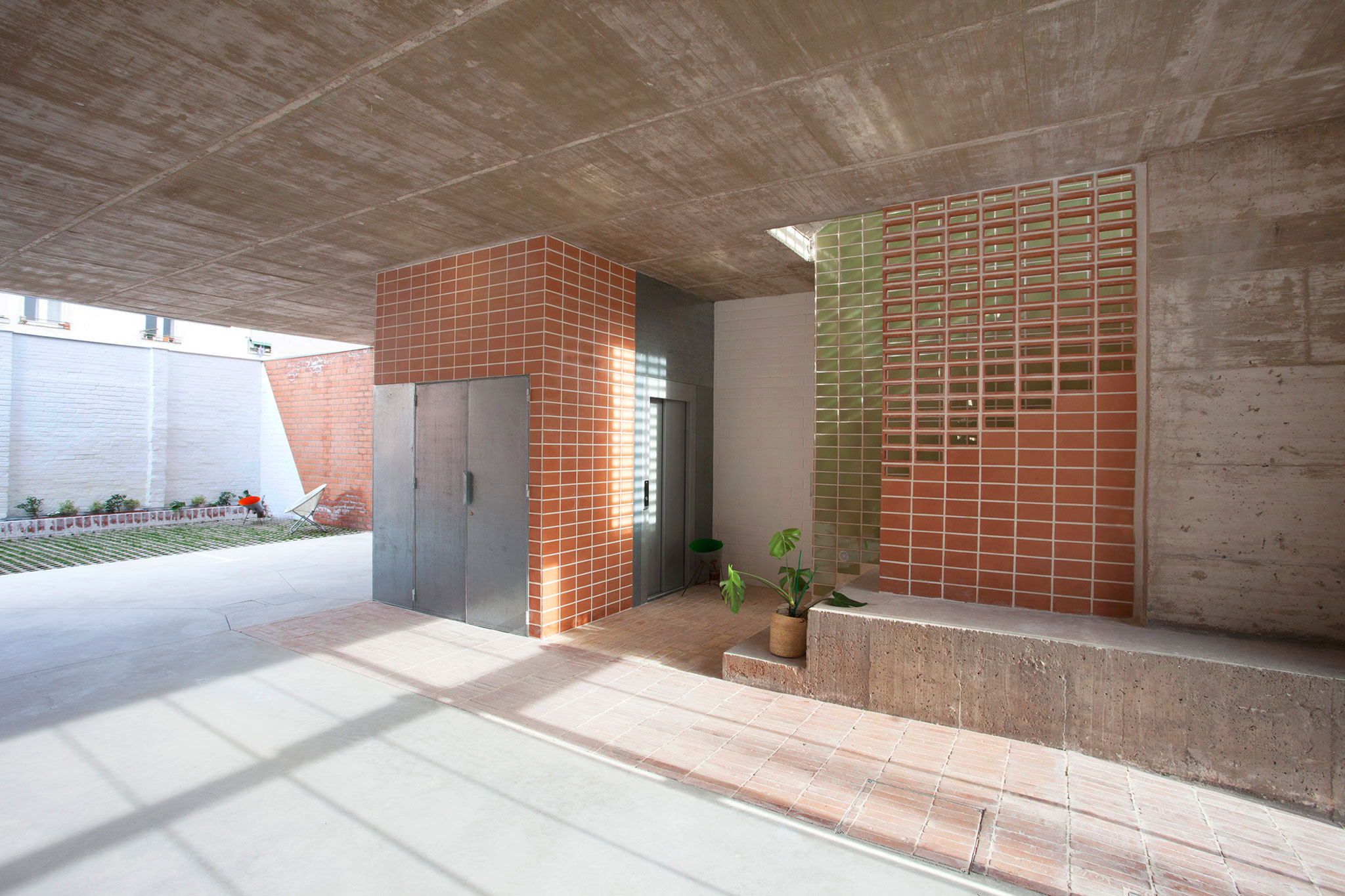Brick, but also exposed concrete and galvanized steel, dot the buildings in the area and become protagonists of the project. From this attentive look at the environment, the ceramic lattice emerges behind which the core of stairs is hidden, to become the most emblematic piece of the complex. Inside the homes, the linoleum flooring and wood finishes contrast with the concrete, brick or galvanized steel on the outside, providing warmth to the rooms.

Botijo house by ALE Estudio. Photograph by Juan Aragonés.
Project description by ALE Estudio
The Botijo house is located on a street where low houses are interspersed next to small industrial warehouses from the early 20th century. It is a neighborhood within a neighborhood, with a reduced scale.
Red brick is the predominant material that colors the street. Its ceramics surround both the low houses and the industrial warehouses, configuring a homogeneous landscape despite the diversity of uses.
The project includes the elements that characterize the environment - materials such as brick, but also exposed concrete and galvanized steel that, although to a lesser extent, also dot the buildings in the area. From this attentive look emerges the most emblematic piece of the complex, a ceramic lattice behind which the core of stairs is hidden. The latticework on the façade appears as a large brickwork seam that is intertwined with that of the neighboring building.

Botijo house by ALE Estudio. Photograph by Juan Aragonés.
The access floor is freed up for common use, thus creating an intermediate space where you can sit and mingle. The staircase is proposed as a continuity of recreation and relational activity between the inhabitants of the different homes. The lattice protects from the direct hit of the sun, and the light enters filtered and plays to project itself and generate changing shadows on the enameled walls of the interior.
Behind the building's staircase, the bathrooms are located within a compact band, freeing up the rest of the space in the homes. The distribution follows a T-shaped scheme that organizes three spaces of different dimensions with great flexibility to inhabit them and change them over time.
The ceiling of the homes, finished with exposed concrete, reaches a height of 3.20 meters. This free height provides a greater sensation of spaciousness and also facilitates the air flow for cross ventilation.
A large window that occupies the entire front of each home catches the light from the south and warms the main room. The intensity is reduced with a roll-up awning imitating those of the neighboring buildings. Each home also has a terrace. Inside the homes, the linoleum flooring and wood finishes contrast with the concrete, brick or galvanized steel on the outside, and give warmth to the rooms.

Botijo house by ALE Estudio. Photograph by Juan Aragonés.
The great thermal inertia of the assembly, thanks to the more than 10cm thickness of the insulation of the envelope and the thermal resistance of the carpentry; the natural cross ventilation that runs from north to south of each home and that, thanks to the height, completes the air renewal cycle more quickly and efficiently; light access in all rooms along with adjustable sun protection; or the use of a radiant-cooling floor with aerothermal energy production, guarantee both low energy consumption and reduced demand.
Lattice
The ceramic of the façade lattice is the rectangular model from the Ferrés brand with dimensions 20 x 10 x 7 cm, with a Terracotta Sand 14 finish. The exterior enclosure of the lattice is self-supporting anchored to the structure. First, a grid with maximum dimensions of 320 x 320 cm is redesigned. This grid is anchored to the façade through a “Murfor” type reinforcement, both for the horizontal and vertical courses. A mortar of Portland cement and fine sand is applied to the joint between lattices.
Finishes
The material chosen for the flooring in the common areas is made up of clay tiles from the Todobarro brand, combining pieces of 10x20 – 10x30 – 10x40, with the rectangular model Antique texture, shade of flamed straw a. On vertical walls, the Ferrés brand ceramic tile, 10x20 cm Smooth tile model, has been chosen, combining various shades, from sand, terracotta and green.













































